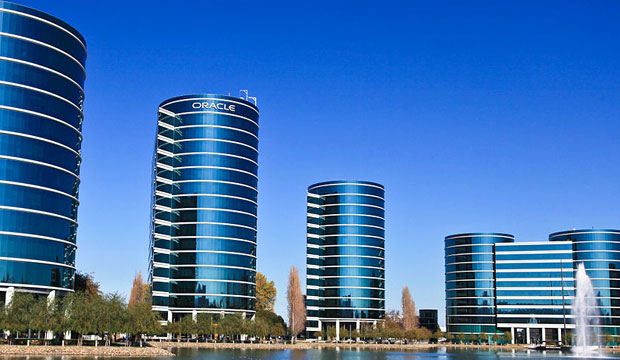Oracle’s most recent financial report reveals some hints about its future. Oracle has posted some very impressive numbers as its cloud computing products and services have taken off, and the recent Q2 reporting is a fine reference point.
From the company’s announcement of its Q2 results:
- Cloud Software as a Service (SaaS) revenues were up 55 percent to US$1.1 billion.
- Cloud Platform as a Service (PaaS) plus Infrastructure as a Service (IaaS) revenues were up 21 percent to $396 million.
- Total cloud revenues were up 44 percent to $1.5 billion.
Extrapolating just the SaaS number to a full year, you can see that Oracle is already one of the top SaaS vendors in the world, a trend that should continue. Continuing a little further, though, there may be signs of worry or at least things to keep an eye on going forward.
PaaS and infrastructure revenues were up nicely but were far from kicking in even 1 billion bucks to the revenue picture. That’s important too — not simply for revenue, which is always important, but for the future of the product line.
Amazon Web Services’ Q3
Adopting a vendor’s platform is now the name of the game, because platform is where new application business comes from. A good platform offers the tools and third-party apps that give developers efficient ways to create new systems, or to modify and maintain what they have.
In contrast, a customer easily could move existing apps to a cloud infrastructure without modifications, while considering future SaaS and platform options. So, when a customer moves to a vendor’s cloud infrastructure, it’s no guarantee of future loyalty.
In comparison, the Q3 financials Amazon reported in late October, according to ZDnet, included the following numbers for Amazon Web Services:
- Amazon Web Services earned $3.231 billion in revenue, up nearly 55 percent year-over-year.
- Its operating income came to $861 million — more than three times the operating income of Amazon’s North American e-commerce business, which came to $255 million.
- Meanwhile, its international business lost $541 million.
Now, Oracle and Amazon are very different companies. Oracle makes most of what it sells, while Amazon is a retailer — so comparing revenues is a bit of an apples and oranges thing.
That said, Amazon was No. 12 on the 2016 Fortune 500 list, while Oracle was No. 81… but still. We’re most interested in the part of Amazon that competes with Oracle — i.e., AWS.
Amazon is much bigger than Oracle in revenues, but Amazon has little software to sell. Its business is derived mostly from providing cloud computing services, much like Oracle does with its IaaS product lines.
Bring Your Own License
PaaS is a grey area. AWS is more of an infrastructure company, while Oracle is the whole shooting match. Oracle CTO Larry Ellison, speaking at Oracle OpenWorld, was happy to point out that the Oracle database runs much faster on Oracle gear than other DBs run on AWS.
Even the Oracle DB runs less well on AWS, according to Ellison, who sports supporting data. Vendors as diverse as Microsoft and Salesforce can mount their systems, including their SaaS apps and their platforms, on AWS. So Oracle understandably is interested in keeping its customers at home.
Here’s where it gets interesting. Oracle has a huge customer base that mostly uses its older on-premises solutions. Most of its SaaS business has been from net new customers, according to the company, which is great. However, it gives Oracle some amount of agita to know that there are competitors out there intent on capturing some of that customer base through IaaS offerings.
To counter that possibility, Oracle has introduced a program called “bring your own license,” with the somewhat ungainly acronym, “BYOL.” BYOL lets existing customers transport their existing software licenses to the Oracle cloud at no cost other than the applicable monthly hosting fees. In other words, there’s no relicensing fee.
This should be a win for Oracle for several reasons: First, it hangs on to customers; second, it enables Oracle to populate its cloud data centers and boost its IaaS numbers; third, it brings customers a step closer to committing to Oracle’s platform.
If that’s not enough, Oracle claims that its database, which is about to become autonomous and self patching, actually is less expensive, because it all runs faster on Oracle gear. Also, it’s more secure, thanks to enhanced security capabilities, some of which come from the autonomous database.
My Two Bits
Both AWS and Oracle are on steep growth curves in the cloud, though Amazon, Microsoft and Salesforce have been at it longer. As the owner of products further up the software stack than simple metal, however, Oracle should have an advantage both in performance and in its ability to produce attractive whole products.
Amazon is not without options. It is the go-to cloud infrastructure provider for businesses running cloud operations, and especially for those established and emerging businesses that just need a sandbox area to work out some ideas. To keep that business, Oracle wants especially to deprive AWS of a landing pad inside its customer base — hence the attractiveness of BYOL.
All of this suggests that the prize of Oracle’s customer base, or a substantial part of it, will be won in the trenches of infrastructure and platform as services. That’s why nearly 20 years into the cloud era, infrastructure is still important, despite all of the messaging about it not mattering or being taken care of for the customer.
Someday that will be true — but for now, as the mainstream moves to the cloud, infrastructure and platform are still very important. It’s also why watching the infrastructure and platform line in the quarterly reports can be revealing.
This article originally appeared on CRM Buyer.

